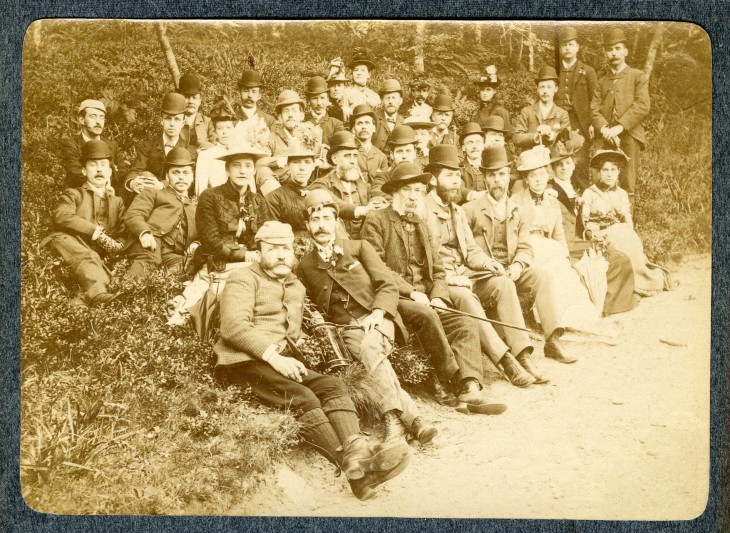Victoria Peters, University Archivist, writes: The Andersonian Naturalists’ Society is amongst the earliest student societies at the University of Strathclyde. It was founded in 1885 by students at Anderson’s College, Glasgow, the antecedent of the University of Strathclyde, with the purpose of encouraging the study of natural science in all its branches. Observation in the field was regarded as critical and a notable characteristic of the society was its successful excursion programme. From the beginning, photography was of great importance and the exhibition of photographs became a usual feature of meetings. Indeed, in 1930, in the annals of the society, one member claimed ‘… no photographs of animals in the field, of plants in situ, or of natural scenery, from the scientific naturalists’ point of view, are to be seen anywhere of greater excellence than those which are from time to time shown upon the screen at our meetings.’
The four albums contain 149 photographs documenting excursions of the Society to a number of locations in Scotland. Ayrshire is particularly well represented. One album, for example, is almost entirely devoted to Culzean Castle. There is an especially striking view of a large fig tree in the castle’s kitchen garden, with a person standing next to it for scale. Other locations in Ayrshire represented are Greenan Castle, Auchendrane and the Heads of Ayr. The Society did not confine itself to Ayrshire– the members visited and photographed other locations in Scotland too. There are photographs of Cadzow near Hamilton, as well as several locations and buildings in Argyll and Bute including Loch Fyne, Arran, Islay, Sanda Island, Saddell Castle and Skipness Castle.
Birds’ nests and eggs were a particularly popular subject. Included are the red-breasted merganser, the common or arctic tern, the oyster-catcher, the meadow-pipit, the rock-pipit, the wren, the red-breasted drab, the coot and various types of gull. Trees were another popular subject, with examples of the oak, the silver fir, the scots fir, the grey poplar, the maple, the beech, the wych-elm and the hawthorn. Other subjects include cattle, adders, rivers, lochs, waterfalls, rock formations and landscapes. There are also a number of arresting group portraits of members of the Society, both men and women, relaxing on their excursions.
The purchase of these albums has helped us fill a clear gap in the University Archives – we had no photographs amongst our records of the Society and, furthermore, no records of the Society at all before 1930. For one of our earliest student societies, and one which attached such significance to photography, this was a real omission and we are delighted that, due to the help of the Friends of the National Libraries, we have been able to rectify that.
